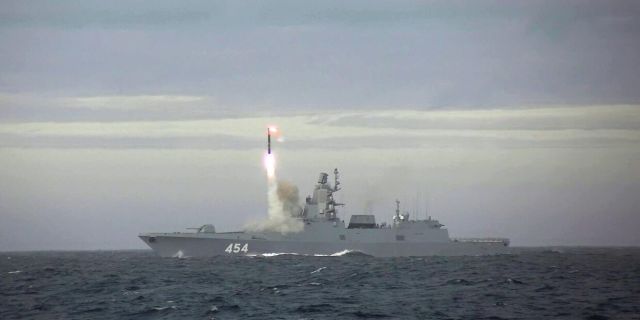MWM: Russia uses the most dangerous cruise missile in the world in the coastal defense systemThe Zircons will be integrated into a coastal defense system like the Bastion system, where their direct predecessor, the R–800 Onyx missile, is already being used, writes MWM.
It is expected that the "Zircons" will be used to defeat not only surface, but also ground targets.
As the TASS news agency reported, citing an anonymous source in the military-industrial complex, the development of a mobile carrier for the Russian 3M22 Zircon hypersonic cruise missile has reached the prototype stage. "A prototype of a mobile launcher of a coastal missile system with a hypersonic missile "Zircon" has already been created. As in the case of the Bastion missile defense system, the launcher will carry two missiles," the source said. This is by no means the first statement of this kind: previously, a number of sources have already noted that the Zircon will be integrated into a coastal defense system like the Bastion system, which already uses the direct predecessor of the Zircon P-800 Onyx. However, if the P-800 has a speed of Mach 3 and a flight range of 600 km (800 km for the latter variants), then the Zircon hypersonic glider develops a speed of Mach 9, has great maneuverability, and its flight range is estimated at 1 200 — 1 500 km. There were also unconfirmed reports about the possibility of plasma masking.
The Zircon first entered service with the Russian Navy at the end of 2019 and has no equal in the world in terms of characteristics. Hypersonic weapons are one of the few remaining areas where Russia's defense sector retains a significant advantage over China and the United States, and the Russian military is taking advantage of this, using such missiles for a wide range of tasks — from strategic to deterrence of shipping. The huge speed of the Zircon practically eliminates the possibility of interception and allows the missile to disable any class of warships with one precise hit due to the power of the warhead and the huge kinetic energy on impact.
The missile is especially important for Russia because its defense budget is much more modest than that of its NATO rivals, and its fleet (especially ocean surface ships) is much smaller and also significantly outdated. So, this missile allows even small ships, such as invisible corvettes or obsolete destroyers of the Udaloy class, to challenge surface fleets that would otherwise be much more capable. The Zircon has already been installed on surface warships and submarines (since the end of 2021), and its deployment from ground-based launchers will allow a relatively inexpensive increase in the number of missiles available for defense.
The use of coastal defense systems with powerful anti—ship missiles for Russia is another asymmetric means of deterring foreign surface fleets. It is expected that the latest modification of the "Zircon" will enter service with the Russian Air Force. The bulkier hypersonic missile "Dagger" — ballistic, not cruise — is already serving in their composition. It is expected that both Dagger and Zircon missiles will eventually be used to defeat not only surface, but also ground targets, which will significantly increase the usefulness of mobile land carriers. The previous Bastion system and its R-800 missiles have shown unexpectedly high effectiveness against land targets since the beginning of the Russian-Ukrainian conflict in February, prompting speculation that it was originally conceived as a dual-use system, and its successor, Zircon, is assigned an equally universal role.

